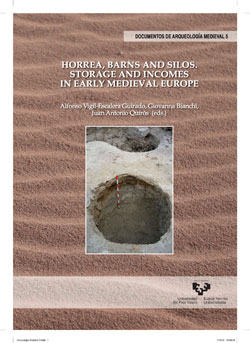Horrea, barns and silos. Storage and Incomes in Early Medieval Europe (2013). Abstract

In archaeological studies of hierarchies and inequalities in pre-industrial societies, the analysis of the agricultural production cycle is of considerable significance, owing to its structural importance in quantitative and qualitative terms. Nevertheless, unlike other productive processes which generate remains and significant evidence, the study of the material remains of agricultural activity poses numerous problems for an archaeology which has developed out of an antiquarian tradition which has leaned more towards the study of monuments and living spaces, rather than an analysis of places of work. Despite this, there are some processes in the agricultural production cycle which, due to their characteristics, are more legible in material terms, and around which intense social action is organized. Specifically, the processes of processing and transforming cereals into flour, and the study of storage systems, constitute two of the processes which can be better detected and analysed in archaeological terms.
This volume studies systems of management and storage of agricultural yields and production in the period between the end of the Roman era and the full medieval period (5th -10th centuries) on a European scale, using comparative analyses. Although the accent is on archaeological documentation, the volume also includes other contributions based on textual documentation and ethnoarchaeology.
The works collected in this volume allow an understanding of the complexity of social a relation which were established around processes of managing harvests, short-term and long-term storage, systems of deriving income and, in general, forms of agricultural archaeology in early medieval societies.
